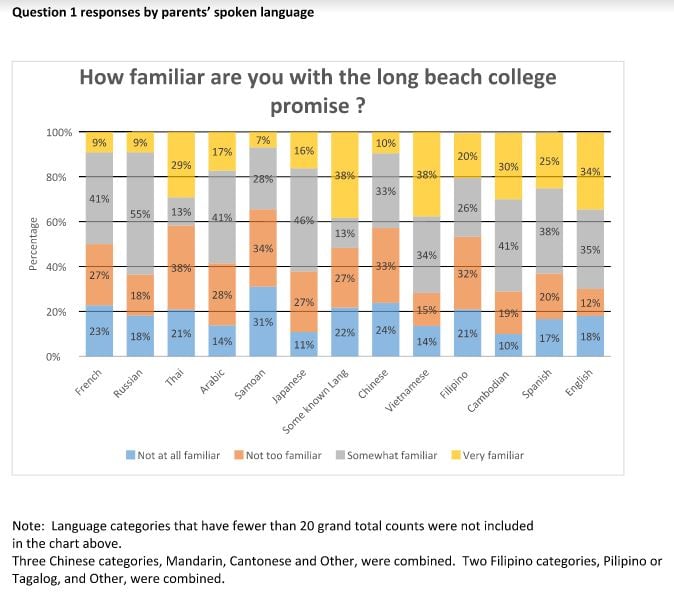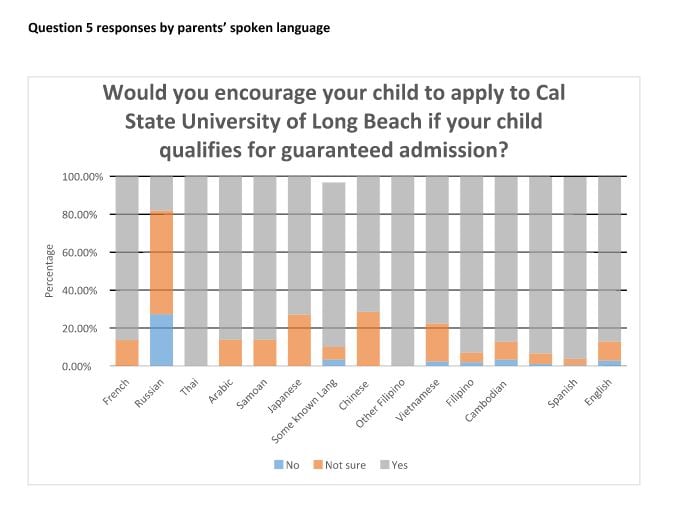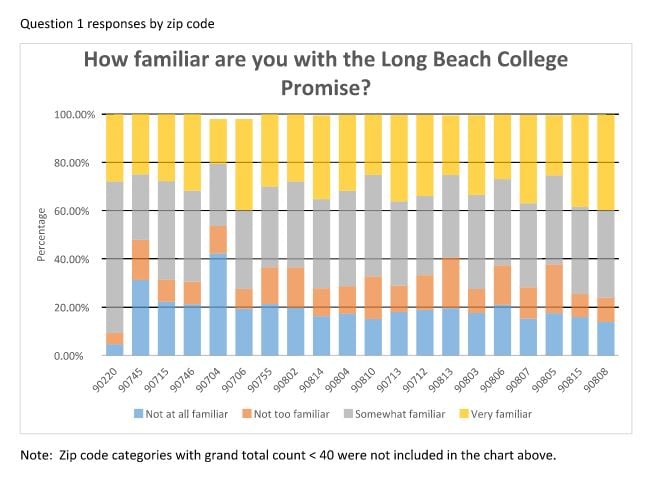You have /5 articles left.
Sign up for a free account or log in.
It’s been about a decade since the Long Beach College Promise was created as a partnership between the California city and a state university, community college and K-12 system, with a goal of increasing access to higher education.
Two years ago the Promise program was expanded to offer a year of free tuition to Long Beach City College. It also offers Promise students preferred admission to California State University at Long Beach.
And while the program has given thousands of Long Beach students at least one free semester of college, Promise officials want to know how they can do a better job of reaching more students and families.
“Long Beach is really diverse, and it presents some challenges in reaching folks in messaging,” said Mark Taylor, the chief of staff to Robert Garcia, Long Beach's mayor. “But we try to get out to every high school graduate that the Promise is available to them, and ‘free’ resonates. One of the biggest things parents read is how unaffordable college is, and that messaging around cost is a barrier.”
So two years ago, with the help of a state grant, Long Beach started a public engagement campaign to figure out if there was a better way of reaching students and their families to raise their awareness of the Promise and the affordability of the tuition-free program.
The campaign conducted a series of surveys as an opportunity for the Promise program’s communications team to look at providing nuance to the initiative’s marketing. The Long Beach school district, for instance, has more than 79,000 students across 85 schools who speak a wide range of languages and come from a number of socioeconomic backgrounds, ethnicities and nationalities.
“We wanted to get a sense of if there is a discrepancy in awareness, and if so, could that then be a pivotal point in closing the achievement gap down the road?” said Terri Carbaugh, associate vice president of government and media relations for CSU Long Beach. “What we found was, in general, in Long Beach [the Promise] is pretty well-known.”
One survey focused on middle school students, while a survey to Long Beach school district parents revealed that 66 percent of parents were somewhat or very familiar with the program.
“Middle school is a real pivotal point in terms of college readiness,” Carbaugh said. “By middle school, we know it’s important that they’re already thinking of going to college. They ought to already have a general understanding of the steps to get there if they are to ultimately be successful in college.”
The surveys helped reveal what the Promise team was looking for -- gaps in outreach. For instance, 31 percent of Long Beach parents who speak Samoan are not at all familiar with the Promise, while 34 percent said they had a little familiarity with the program.
“What’s interesting to us is the Samoan community has a higher rate of people who are not at all familiar with the Promise, and that’s something we wouldn’t have known,” Carbaugh said. “There is this tendency to go after Hispanic, black or Cambodian populations. So what’s going on in the Samoan community and what can we do to improve this number?”
Then there are the more than 20 percent of predominantly Russian-speaking families who responded that they wouldn’t encourage their child to attend Cal State Long Beach even if they qualified for guaranteed admission. Cal State Long Beach receives an abundance of applications -- the most in the state, at about 90,000 a year -- so guaranteed admission is a valuable incentive for Promise students.
“It’s a pretty small community, but what we’re finding here is that some of our tinier communities, in some respects they’re communities that when you are a large institution can become invisible,” she said. “They may not be large in number, but some communities are trailing, and maybe with a little bit of energy we can flip those numbers and it may not require a lot of energy. But we need to do something.”
The report also broke down responses by zip code and found that location within the Long Beach area may prove to be another challenge. For instance, more than 50 percent of parents on Catalina Island responded that they were not familiar with the program.
The next step, then, is crafting Promise messages that resonate with these communities and reach them where they are, which would be in community centers, churches and other places that aren't school.
The Language of Free
Developing that message requires more than translating English versions of the Promise program to Spanish or Chinese, Carbaugh said.
“In different languages, words have different meanings, and we’re trying to be very sensitive to that,” she said.
Take for example the phrase “A tuition-free year,” which in Spanish translates to “un ano de colegiatura es gratis.” But there isn’t a term for “tuition-free” in Spanish. Or “Long Beach Internship Challenge,” which appears in the College Promise pamphlet. In Spanish, the translation is “el reto de practicantes profesionales de Long Beach,” but that could refer to people already in their careers and not to students.
“For Hispanic and Asian families that don’t understand the [English] language, they do understand the benefits and they do understand free, but the devil is in the details,” said Martha Kanter, a former undersecretary of education under President Obama, who leads the College Promise Campaign.
Families also often are overwhelmed by college information and may hear how unaffordable it is, even if they are lower income and would qualify for financial aid or tuition-free programs, Kanter said.
“Simplify the information. Tailor to audiences and do some face-to-face, as well as digital outreach,” she said. “I used to go to libraries to get the messages out to where people go so they can absorb it.”
The Long Beach team is still deciphering the survey results and has begun identifying what may turn out to be an example for the best way to move forward. One area where respondents were particularly knowledgeable about the Promise program was Compton, located in the 90220 zip code -- which has a high number of black and Latino residents.
“Maybe there is a lot of outreach activity in this area and that’s why we’re doing better,” Carbaugh said. “But this shows us maybe there are some best practices we can use.”







